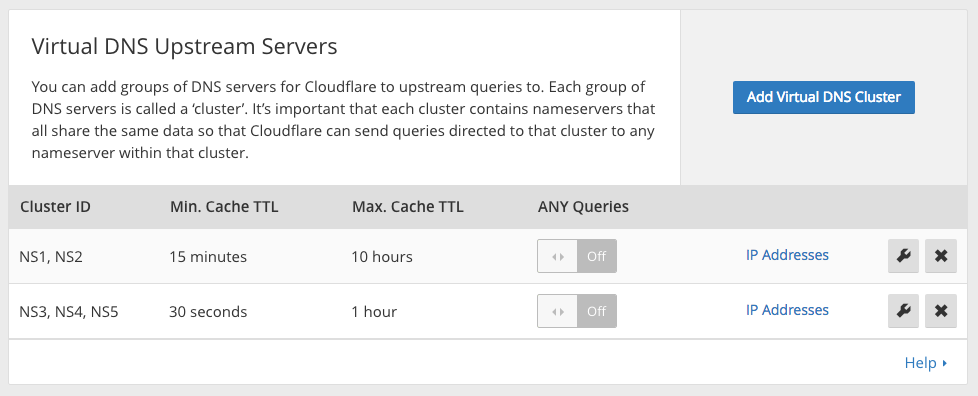Nokia, Ericsson Land 5G Operator Deals
 Nokia also purchased a U.S. startup with a technology that promises to make base stations more energy efficient.
Nokia also purchased a U.S. startup with a technology that promises to make base stations more energy efficient.
 Nokia also purchased a U.S. startup with a technology that promises to make base stations more energy efficient.
Nokia also purchased a U.S. startup with a technology that promises to make base stations more energy efficient.
 Networks get a starring role in OpenStack's 14th release.
Networks get a starring role in OpenStack's 14th release.

Over the last six years, we’ve built the tooling, infrastructure and expertise to run a DNS network that handles our scale - we’ve answered a few million DNS queries in the few seconds since you started reading this.
DNS is the backbone of the internet. Every email, website visit, and API call ultimately begins with a DNS lookup. Internet is built on DNS, so every hosting company, registrar, TLD operator, and cloud provider must be able to run reliable DNS.
Last year CloudFlare launched Virtual DNS, providing DDoS mitigation and a strong caching layer of 100 global data centers to those running DNS infrastructure.
Today we’re expanding that offering with two new features for an extra layer of reliability: Serve Stale and DNS Rate Limiting.
Virtual DNS sits in front of your DNS infrastructure. When DNS resolvers lookup answers on your authoritative DNS, the query first goes to CloudFlare Virtual DNS. We either serve the answer from cache if we have the answer in cache, or we reach out to your nameservers to get the answer to respond to the DNS resolver.
Even if your DNS servers are down, Virtual DNS can now answer on your behalf Continue reading
 Next-gen security arrives under the ‘SDSN’ moniker.
Next-gen security arrives under the ‘SDSN’ moniker.

We’re excited to announce the release of Ansible Container 0.2.0. The last few months have been exciting. We’ve been working at a fever pitch to add new features, build examples, and resolve issues, while at the same time we’ve seen the interest level and participation rate of the project steadily grow. It’s been amazing, and we’re grateful to all those that helped by opening issues, contributing code, and spreading the word. Thank you!
Throughout this release cycle we heard from a number of users that being able to reuse existing Ansible content was critical. We focused on that, making Ansible roles a key part of this release. We came up with several enhancements that make it easy to access existing Ansible roles during the container build process. We added a feature to assist in retrofitting existing roles to be ‘container aware' and we looked to the future and imagined new ways roles could enhance the process of building and sharing containers.
We heard several times that incorporating existing Ansible roles into the container build process needed to be easier. We solved this by creating a method for accessing roles from the local file system as Continue reading
Terry Slattery explains what to do when an essential app performs poorly and how APM systems can help.
 Network slicing and virtualization are going to be key pillars of 5G.
Network slicing and virtualization are going to be key pillars of 5G.
As data grows, a shift in computing paradigm is underway. I started my professional career in the 1990s, during massive shift from mainframe computing to the heyday of client/server computing and enterprise applications such as ERP, CRM, and human resources software. Relational databases like Oracle, DB2, SQL Server, and Informix offered improvements to managing data, and the technique of combining a new class of midrange servers from Sun Microsystems, Digital Equipment Corporation, IBM, and Hewlett-Packard with storage tiers from EMC and IBM reduced costs and complexity over traditional mainframes.
However, what remained was that these new applications continued to operate …
The Emergence Of Data-Centric Computing was written by Timothy Prickett Morgan at The Next Platform.
The post Worth Reading: The fall of Theranos appeared first on 'net work.
 Commercialization is a natural part of the maturation of SDN and NFV.
Commercialization is a natural part of the maturation of SDN and NFV.
 MANO has been considered a roadblock to NFV.
MANO has been considered a roadblock to NFV.
 SDxCentral will be covering all the news from the conference. Check back here for updates.
SDxCentral will be covering all the news from the conference. Check back here for updates.
 Managed WiFi from a cloud perspective.
Managed WiFi from a cloud perspective.
 In addition to a new crop of SD-WAN players, traditional enterprise networking players want a piece of the network edge.
In addition to a new crop of SD-WAN players, traditional enterprise networking players want a piece of the network edge.